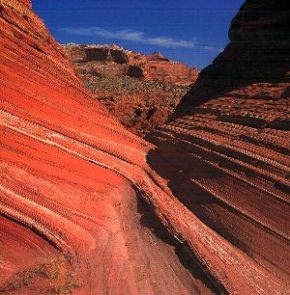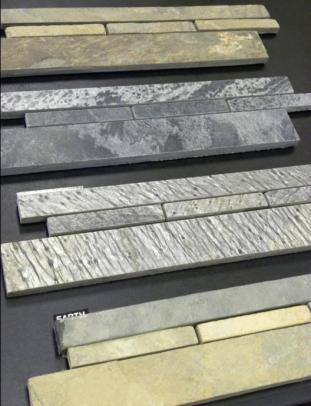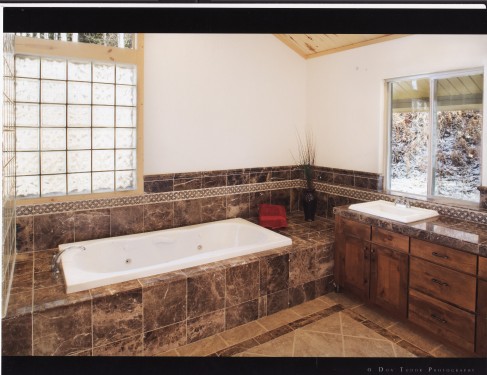Sound reduction underlayments

Quiet Please
Keeping your home quiet can be a challenge.
Sound transfer between rooms, floors and condos can be a problem especially if you have noisy neighbors and if they have hard surface floors. Ceramic tile is probably the worst offender when it comes to transferring sound to neighbors below. Whilst nothing in the floor industry is proof anything, there are several different underlayment’s that can help reduce the transmittal of sound.
The IBC, “International Building Code” has two methods of testing sound. The IIC, “Impact Insulation Class” tests the ability to block impact sounds i.e. footsteps and objects dropped on the floor. The STC, “Sound Transmission Class” tests the ability to reduce airborne sounds such as voices, stereo systems and T.V’s. The results of the test are combined to create a number; the higher the number the better the resistance to sound. Ratings of 50 or above will satisfy the minimum requirements of the International Building code. The test evaluates the sound transfer over various combinations of building materials within the floor/ceiling assemblies and not just testing the flooring or underlayment. By using a good underlayment you are adding to the resistance of sound transmittal. See the following table for a general idea of what the IIC and STC rating numbers mean.
| IIC/STC lab | FSTC field | ||
| 26-30 | 20-22 | Most sentences clearly understood |  |
| 30-35 | 25-27 | Many phrases and some sentences understood without straining to hear | |
| 35-40 | 30-3 | Individual words and occasional phrases clearly heard and understood | |
| 42-45 | 35-37 | Medium loud speech clearly audible, occasional words understood | |
| 47-50 | 40-42 | Loud speech audible, music clearly heard | |
| 52-55 | 45-47 | Loud speech audible by staining to hear, music normally can be head and may be disturbing |  |
| 57-60 | 50-52 | Loud speech essentially inaudible; music can be heard faintly but bass notes disturbing | |
| 62-65 | 55-60 | Music heard faintly, bass notes “thump”; power woodworking equipment clearly audible |  |
| 70- | 60 | Music still heard faintly if played very loud | |
| 75+ | 65+ | Effectively blocks most airborne noise sources |
IIC-STC 50 is the International Building code.
| Concrete slab | ICC | Required underlayment rating for minimum IBC code of 50 |
| 6” concrete slab | 27 | 23 |
| 8” concrete slab | 32 | 16 |
Rubber underlayment
Solid rubber is without a doubt the most resilient underlayment available. In fact, 2mm of rubber underlayment is equal to 6mm of the common underlayment cork. Rubber underlayment can be used with most all wood flooring installations, including glued down, nailed down and stapled down. It is also specified for use beneath ceramic tile, cork floors, carpets and a variety of resilient sheet and tile floors. As is the case with acoustic cork, whenever you are installing flooring by a method other than free-floating, the underlayment must be attached to the sub-floor as opposed to simply laying it down.
Rubber underlayment is specifically designed to increase the IIC rating and STC rating of a floor to meet or exceed building code requirements. The most common rubber underlayment thickness installed is 5 MM (1/4″). Rubber underlayment performs best when installed between two rigid surfaces. The sub-floor will act as one rigid surface and the finish flooring acting as the second rigid surface, whether it is tile, hardwood, laminate, or particle board with vinyl, will create a sandwich of materials with a flexible core. Rubber underlayment will always perform best installed over concrete, but whether the sub-floor is concrete or wood the STC rating will easily reach the high 40’s STC range.
Using Cork Underlayment
Acoustic Cork: Cork materials, unless incredibly thick (1″ +), will not significantly improve the IIC rating of a floor. Cork has been tested to perform only about a third as well as rubber underlayment of the same thickness. It has remained a popular product largely because of the cheap price tag and partly because of the implied environmentally friendly aspect. Saving a couple hundred dollars on a small project does not really add up to true savings if the product purchased does not actually work.
Carpet with Carpet Pad
A carpeted environment is quiet because the pile surface absorbs surface noise at the source. On a concrete floor with no cushion, a carpet registered an impact noise rating of +14. The same carpet with separate cushion had an impact noise rating of +25—again significant improvement. Carpet cushion can reduce the impact exerted on floor covering by one-half.
This amounts to a smiley face. 
| Underlayment available through Carpets Plus | Carpet | Tile | Wood | Laminate | IIC Rating, over standard floor/ceiling construction |
| Healthy Choice pad |
* |
No data |
|||
| 8lb 3/8 rebond |
* |
No data |
|||
| 8lb 7/16 rebond |
* |
No data |
|||
| Rubber pad |
* |
No data |
|||
| Interlock |
* |
62-70 |
|||
| Tredmor |
* |
71-73 |
|||
| Easymat |
* |
* |
71-73 |
||
| Cork 6mm |
* |
* |
53-65 |
||
| Sound Vapor Block |
* |
71 |







